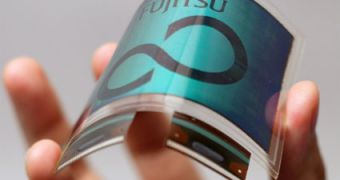It won't be long until people around the world will be able to enjoy their favorite book with included animation, in the form of flexible electronic displays, or e-paper. Portable TVs could eventually be carried in a pocket and rolled out when the favorite show is on.
Flexible electronics, also known as flex circuits or flex circuit boards, represent a technology for building electronic circuits by depositing electronic devices on flexible substrates such as plastic or even organic materials.
Now, a group of companies is preparing a new generation of thin electronic displays, often called e-paper, that will not need any additional light sources to allow the reading, eliminating power-gobbling backlighting used in LCDs that now dominate the notebook computing market.
Taiwan's Prime View International Co. Ltd., one maker of flexible electronic paper displays for e-books and other niche display makers such as Britain's Plastic Logic Ltd. are among those developing such next-generation screens, that, unlike LCDs, will retain the images on the screen even after they have been turned off.
"It's a niche product right now but we think it will become popular gradually," said PVI President Y.S. Fu. Flexible electronics are typically characterized by conducting plastic-based liquids that can be printed onto thin, bendable surfaces.
The already available electronic paper uses thin layers of steel topped with another layer of circuits, then a thin film of digital ink and future applications will allow hundreds of books to be downloaded onto them via the Internet and will also produce cellphones with flexible screens that won't break when dropped.
There are many advantages to the developing of these flexible materials, like package size reduction, a simplified system design, considerable weight and thickness reduction and the fact that they can dissipate heat at a better rate than any other dielectric material while providing the added benefits of vastly improved flexibility.

 14 DAY TRIAL //
14 DAY TRIAL //